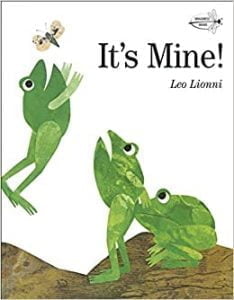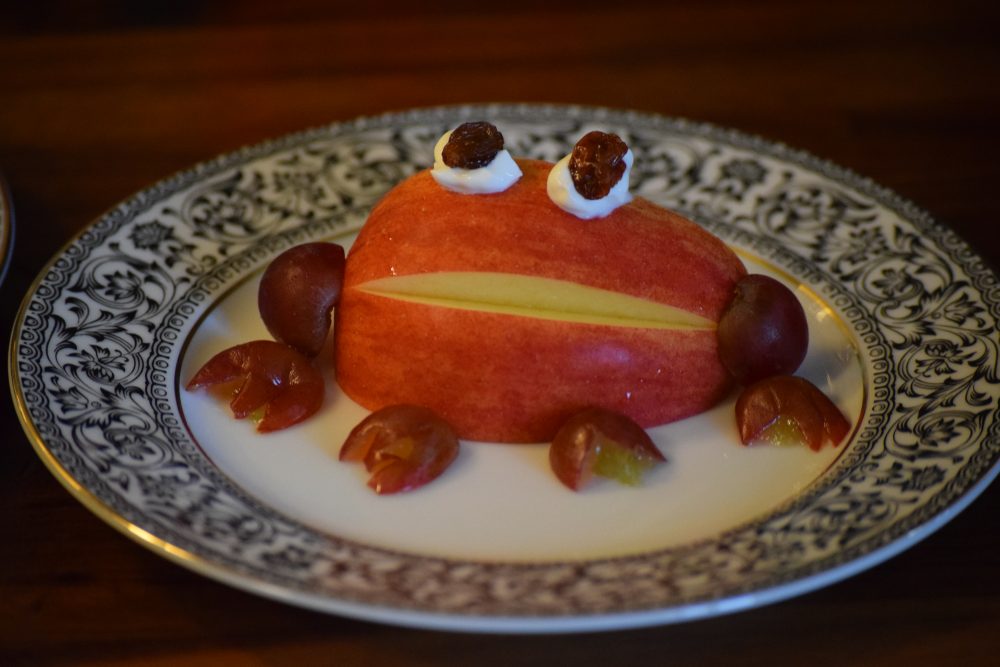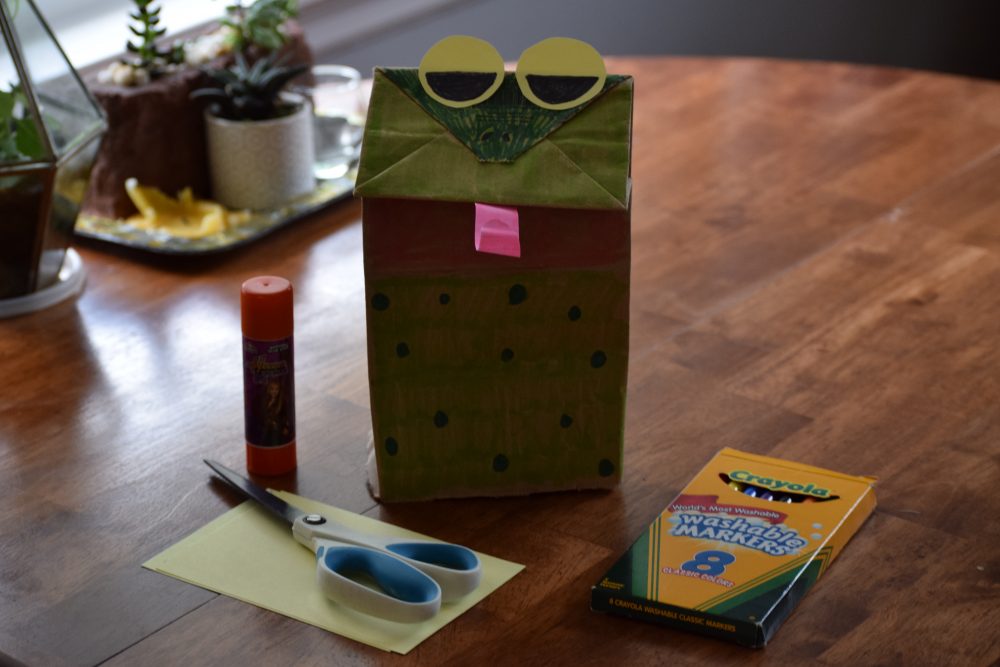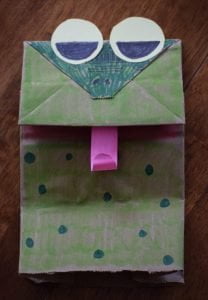This week’s theme is frogs and toads. Our “Growing Minds Day by Day” educational resource lists are designed for families and educators.
Growing Minds Day by Day
Frogs and Toads
Books:
What did the frog say as he looked through the books at the library?
Reddit! Reddit! Reddit!
 The Wide-Mouthed Frog
The Wide-Mouthed Frog
Today’s first book recommendation is The Wide-Mouthed Frog by Keith Faulkner. In this story, a curious frog who loves to eat flies investigates the eating habits of other creatures in the swamp–until he comes upon a big green one with lots of teeth who finds wide-mouthed frogs simply delicious. Watch a librarian-led read aloud of this pop-up book on YouTube.
 It’s Mine!
It’s Mine!
Our next book is It’s Mine! by Leo Lionni. In this fable, three frogs spend their days fighting over air, water, and land. When a heavy storm brings them together in fear, they learn how important it is to share and work together. Watch a read aloud of this story on YouTube.
Find more books
Visit the Growing Minds’ farm to school literature database to discover more of our favorite children’s books. Type “diversity” into the search bar to find books that feature characters from underrepresented racial and ethnic groups.
Local Food Recipe:

Follow the recipe below to make a toad-ally delicious and healthy snack. You can use a green apple and grapes to create a frog, or a red apple and grapes to make a toad (as pictured here). You could even substitute a locally grown peach for a seasonally-appropriate summer snack.
Apple Toad (or Frog)
Serves 1
Recipe courtesy of Allrecipes.com
Ingredients:
- 1/4 Granny Smith apple, cored
- 3 green grapes, halved
- 1 tsp. cream cheese, softened
- 2 raisins
Directions:
- Lay the apple sideways on a plate; cut out a thin horizontal sliver for the mouth.
- Arrange 1 grape half on each side of the apple as arms.
- Cut out 2 little triangles from the other 4 grapes so they look like toes and fingers and arrange them as hands and feet.
- Shape cream cheese into 2 little balls and stick a raisin into each as a pupil. Stick cream cheese eyes on top of the quartered apple.
- Enjoy this healthy and adorable snack!
Educational Resources:

Frogs and toads play an important role in natural ecosystems as well as in the garden. Adult frogs and toads are little carnivores with big appetites. They eat insects, slugs, and other small invertebrates, making them a friendly inhabitant of the garden that helps with pest control.
Frogs and toads (along with salamanders) are amphibians. Amphibians spend part of their life cycle in the water and another part on the land. Frogs and toads play an important role in the food chain as both predators and prey. Adults consume insects, while tadpoles consume algae and aquatic plants. Toads and frogs are eaten by larger animals, like birds, snakes, and fish.
Healthy amphibian habitats include wet sites, dry sites, and hiding places. Here are some tips for making sure your yard or garden is a frog-friendly place:
- Provide shelter – Kids will enjoy building a cozy little toad house in your garden! A toad house is simply a cool, safe place where toads can hide from predators. All you need is some small rocks and/or a clay flower pot. See the photo above for inspiration and get instructions here. Note: While it’s important to create an inviting environment for frogs and toads in your yard, you shouldn’t move or relocate toads or frogs that you find in the wild.
- Offer a water source – Frogs and toads require a nearby water source in order to thrive. If you don’t have the resources to add a pond or water feature to your yard, doing something as simple as burying a birdbath or saucer in your garden and keeping it filled up with water may help lure amphibian friends to your yard.
- Plant natives – Planting native plants in your yard or garden helps attract more insects (aka frog food) to your garden. The National Wildlife Federation has a searchable database of native plants that will attract wildlife to your yard. You can search by zip code to identify the native plants that are adapted to where you live.
- Eliminate chemicals – Amphibians have permeable skin, which makes them very sensitive to toxic chemicals. For this reason, they’re considered an “indicator species” for environmental health. Their presence in your garden indicates that it’s a healthy, chemical-free place. Your school or family can do its part to protect frogs and toads by not using pesticides, herbicides, or other chemicals on your property.
- More tips – Find more tips to help frogs and toads in your yard here.
Discover the Frogs and Toads of NC: Explore the many species of frogs and toads that call North Carolina home by visiting herpsofnc.org. Click on a photo of a frog or toad to learn about that species, see its distribution throughout the state, and hear a recording of its call.
Activities:

Frog Hand Puppets and Songs
You’ll need the following supplies:
- Paper lunch bags
- Markers or paint
- Construction paper or white paper
- Glue stick or school glue
- Scissors
 Directions:
Directions:
- Kids can paint or color their paper bag to make a frog or toad.
- Cut out two circles of paper for eyes, and a long skinny rectangle for a tongue. You can either use colored construction paper, or white paper that kids can color. Optional: cut out arms or legs for your frog.
- Glue the circles to the top bottom of the bag, then draw on half moons for pupils.
- Glue the tongue inside the lap of the bag.
Once they’re finished decorating their puppets, encourage kids to put on a puppet show, or to act out frog-themed children’s songs, like “Froggy Went a-Courtin’” (Smithsonian Folkways recording), “The Little Green Frog”, “Five Green and Speckled Frogs”, “Life Cycle of a Frog”, or “Felix the Frog” using their puppets.
Energizer! Hopping Challenge
The Hopping Challenge can be played in a circle, a line, or as a “Froggie Says____” game. Give kids a variety of “hopping” commands such as:
- Hop in one place.
- Hop and turn in a circle at the same time.
- Hop on left/right foot.
- Hop backwards/sideways.
- Hop in a square or circle.
- Hop over a line.
- Hop with a partner.
Frozen Frogs:

Many animals hibernate during the winter months in order to conserve energy and warmth when food sources and sunlight are scarce. Most frogs spend the winter buried deep under the water in the muck of streams and ponds. However, wood frogs do something truly incredible in the winter–they freeze!
These unique frogs inhabit moist woodlands throughout much of northern North America, including the mountains of Western North Carolina. They spend the winter nestled among the leaf litter of forest floors, and when temperatures dip below freezing and ice begins to form, the frog’s bodies freeze, too. Once their bodies are frozen, their hearts stop beating, they don’t breath, and they don’t move their muscles until temperatures start to warm up again in the spring. Watch a short video from PBS’ NOVA science program to see these fascinating creatures in action (educational supporting materials and NC science standards connections are also available on this page). You can also visit the National Park Service website to learn more about these amazing creatures.
—
That’s it for this week. Check back next week for new resources. Click here to access Day by Day resources from past weeks. If you didn’t find what you’re looking for here, please visit our Lesson Plans page.

